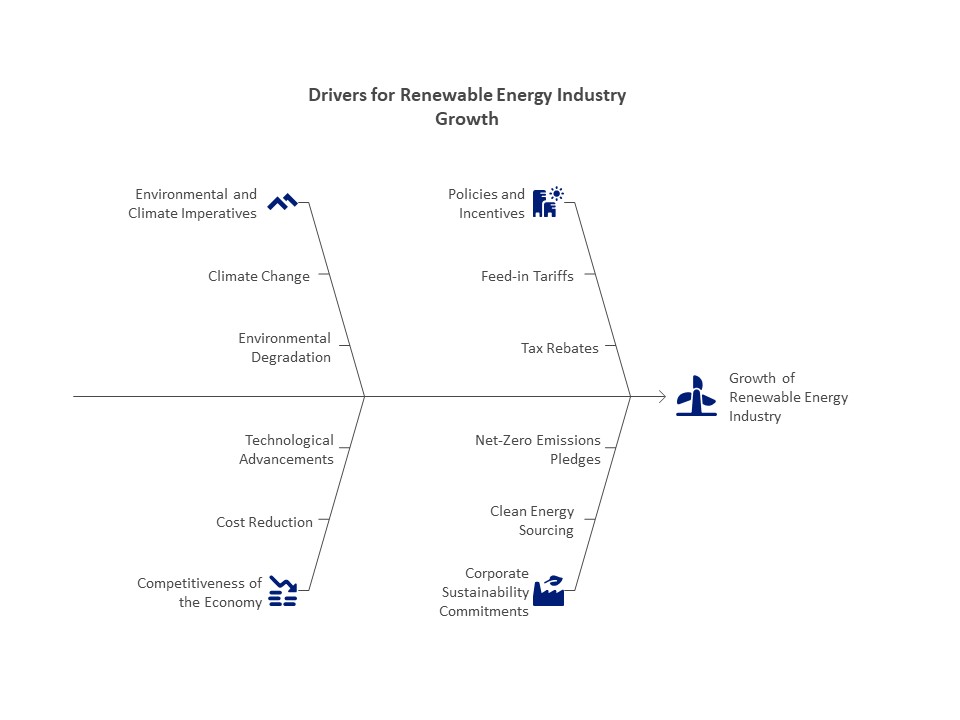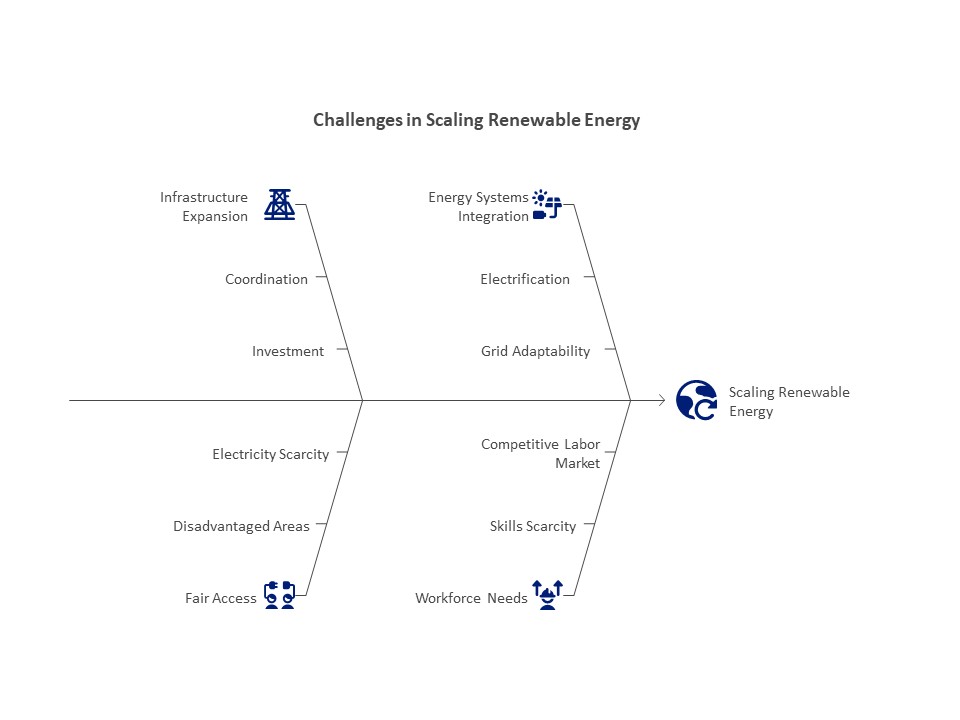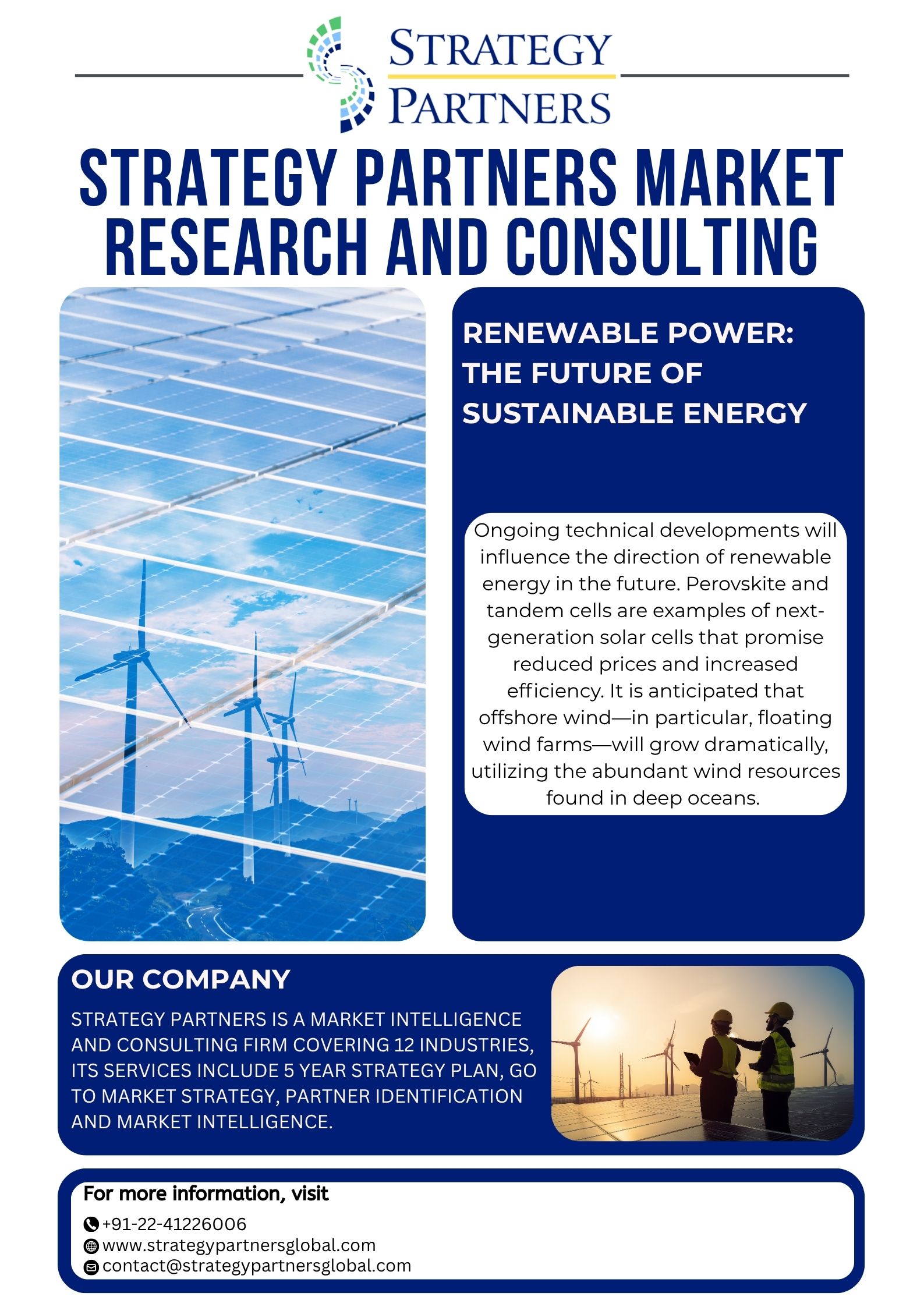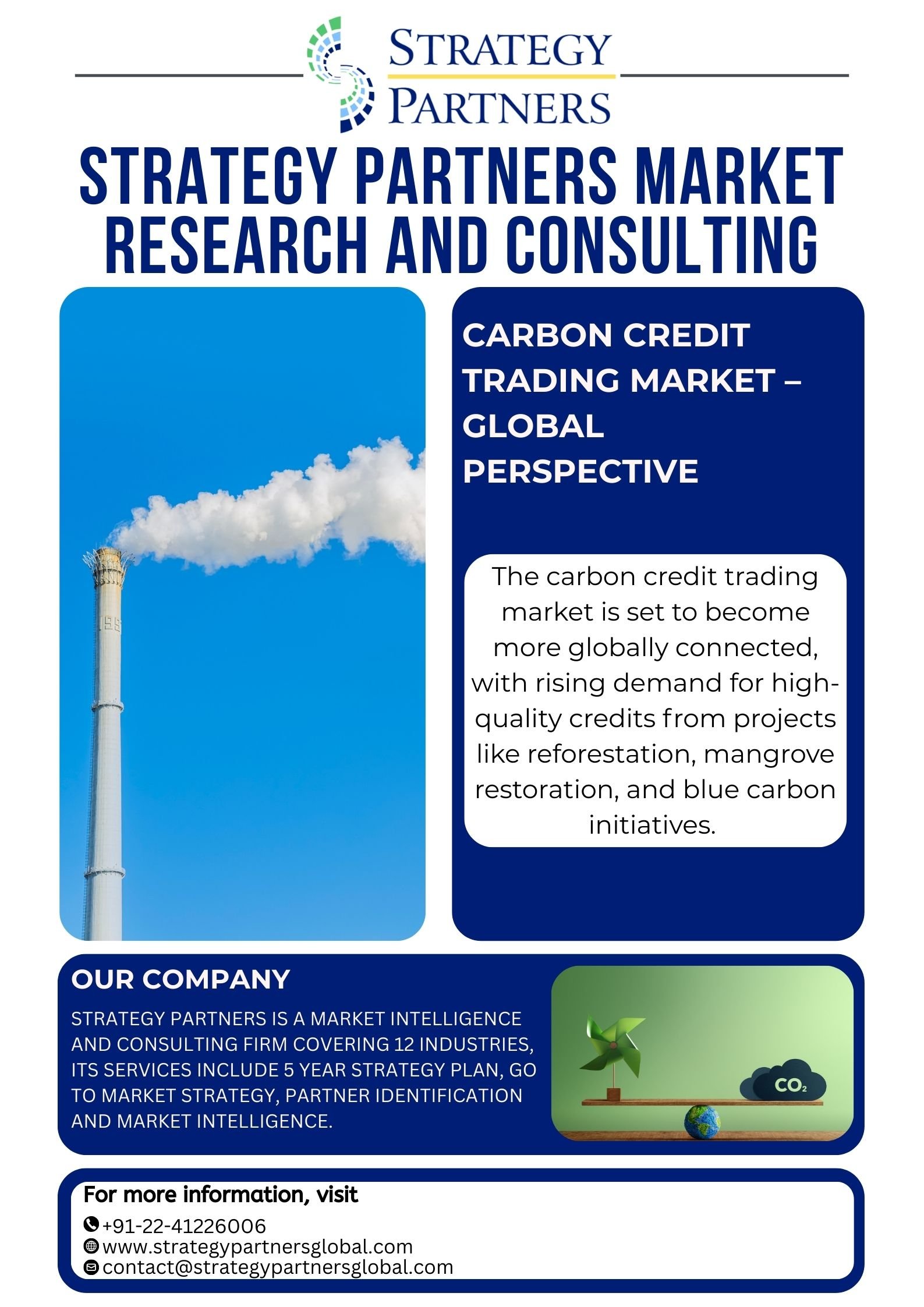Global Renewable Power sector
One of the main pillars of the shift to a sustainable, low-carbon energy future is the worldwide renewable power industry. Renewable energy sources like solar, wind, hydropower, bioenergy, and geothermal have experienced an unparalleled surge in popularity as the need to combat climate change, lower greenhouse gas emissions, and satisfy growing energy demands becomes more pressing.
Adoption of Renewable Power sector in Early Stages:
Early human societies used water for milling and wind for sailing, which is where the origins of renewable energy may be found. Nonetheless, the late 19th and early 20th centuries saw the emergence of the contemporary renewable energy industry. With the building of massive dams, like the Hoover Dam in the United States in the 1930s, hydropower—one of the first renewable energy sources—saw tremendous growth and was able to supply electricity to expanding metropolitan populations.
Due to their quantity and affordability, fossil fuels dominated global energy systems in the middle of the 20th century, pushing renewables to the periphery. Initially employed for specialized purposes such as powering satellites, solar photovoltaic (PV) technology was first found in the 1830s and evolved into useful applications in the 1950s.
Renewable Power sector in Present:
The market for renewable energy is expanding at a rate never seen before as of 2024. Although its growth has slowed in comparison to solar and wind, hydropower is still the greatest renewable electricity source, accounting for 14.3% of all low-carbon electricity worldwide in 2024. Despite their lesser scales, geothermal and bioenergy nevertheless have significant uses in particular areas.Globally, the surge in renewable energy is not consistent. With over half of all wind and solar installations worldwide, China is the world leader in renewable capacity. The increase in renewable energy is mostly due to technological advancements. Floating wind farms and hybrid renewable energy systems are opening up new possibilities for electricity generation, while bifacial solar modules, which absorb sunlight on both sides, have increased efficiency. The intermittency of renewable energy sources is being addressed by developments in long-duration energy storage (LDES), such as iron-air batteries and green hydrogen, which provide power availability around-the-clock. Furthermore, developments like floatovoltaics—solar panels on water bodies—and agrivoltaics—co-locating solar panels with agriculture—are improving energy-water synergy and maximizing land use.
Renewable Power sector in Future:
Ongoing technical developments will influence the direction of renewable energy in the future. Perovskite and tandem cells are examples of next-generation solar cells that promise reduced prices and increased efficiency. It is anticipated that offshore wind—in particular, floating wind farms—will grow dramatically, utilizing the abundant wind resources found in deep oceans. Green hydrogen, which is generated from renewable power, has the potential to be a vital component in the decarbonization of industries that are difficult to electrify, such as heavy industry and aircraft. Solid-state and flow batteries are examples of energy storage innovations that will improve grid stability and enable renewable energy sources around-the-clock. Artificial intelligence (AI) and digitization will also change the industry. Predictive maintenance can minimize downtime for solar farms and wind turbines, and AI-powered grid management systems can optimize energy distribution.
Drivers for the Renewable Energy Industry
Environmental and Climate Imperatives
The renewable power industry is primarily driven by the pressing need to combat climate change. The need for low-carbon energy solutions has increased due to environmental degradation, extreme weather, and rising global temperatures.
Competitiveness of the Economy
The cost of renewable energy is now more affordable than that of fossil fuels. The price of wind turbines, solar panels, and other renewable infrastructure has decreased due to economies of scale and technological advancements.
Policies and Incentives That Support
One of the main pillars of the renewable energy growth is government policy. Financial risks have been decreased and investment has been stimulated by incentives such as feed-in tariffs, tax rebates, and renewable energy mandates.
Commitments to Corporate Sustainability
Demand for renewable energy is being driven by businesses’ growing emphasis on sustainability. Businesses from all industries are signing contracts to source clean energy for their operations and pledging to achieve net-zero emissions. This trend is especially noticeable in high-energy-demanding sectors like manufacturing and technology, where renewable energy helps achieve cost and environmental objectives.

Restraints on the Renewable Power Sector:
Storage Issues and Intermittency
One major limitation of solar and wind power is their sporadic nature. Without reliable storage options, these weather-dependent sources are unable to deliver steady power.
Limitations of Grid Infrastructure
One of the biggest obstacles to the incorporation of renewable energy is outdated or insufficient grid infrastructure.
High Initial Expenses
Renewable energy projects still need a large initial investment, even with declining costs. Significant funding is required for large-scale wind and solar farms as well as related infrastructure like grids and storage.
Dependencies in the Supply Chain
For essential parts and materials like solar panels, wind turbine parts, and batteries, the renewable energy industry depends on intricate international supply networks.

Challenges Facing the Renewable Power Sector:
Reaching Climate Goals through Scaling
The infrastructure for renewable energy must be greatly expanded in order to meet global climate commitments. This calls for previously unheard-of levels of coordination, investment, and international policy alignment.
Providing Fair Access
Not everyone profits equally from renewable energy. Scaling renewable solutions to reach disadvantaged areas is a priority because electricity is scarce in many developing regions.
Energy Systems Integration with Renewables
To properly utilize clean energy, industries like heating and transportation must electrify, and grids must become more adaptable to manage varied renewable inputs.
Meeting the Needs of the Workforce
There is a scarcity of engineers and technicians with the necessary skills in the renewable energy industry. There will be a greater need for specialized talent as the industry expands, and businesses will have to contend with a competitive labor market.

From being a niche player, the global renewable power industry has grown to become a vital component of the energy transition. While the present is characterized by rapid growth and technological advancements, the past established the groundwork through early innovations and policy backing. Future energy systems will be dominated by renewables due to climate demands, cost reductions, and international collaboration.


